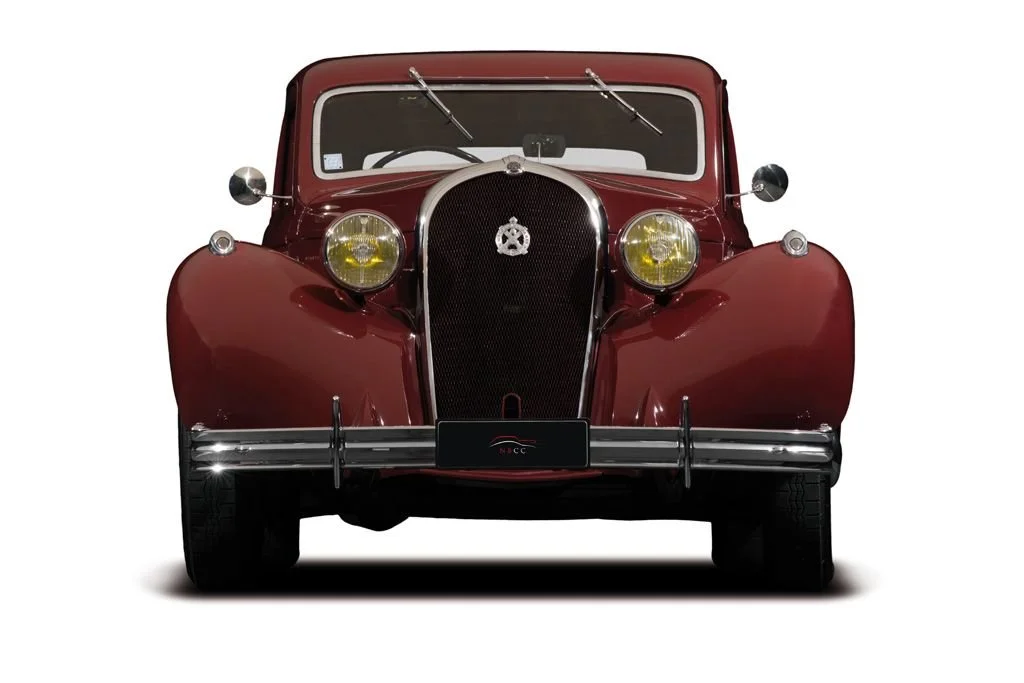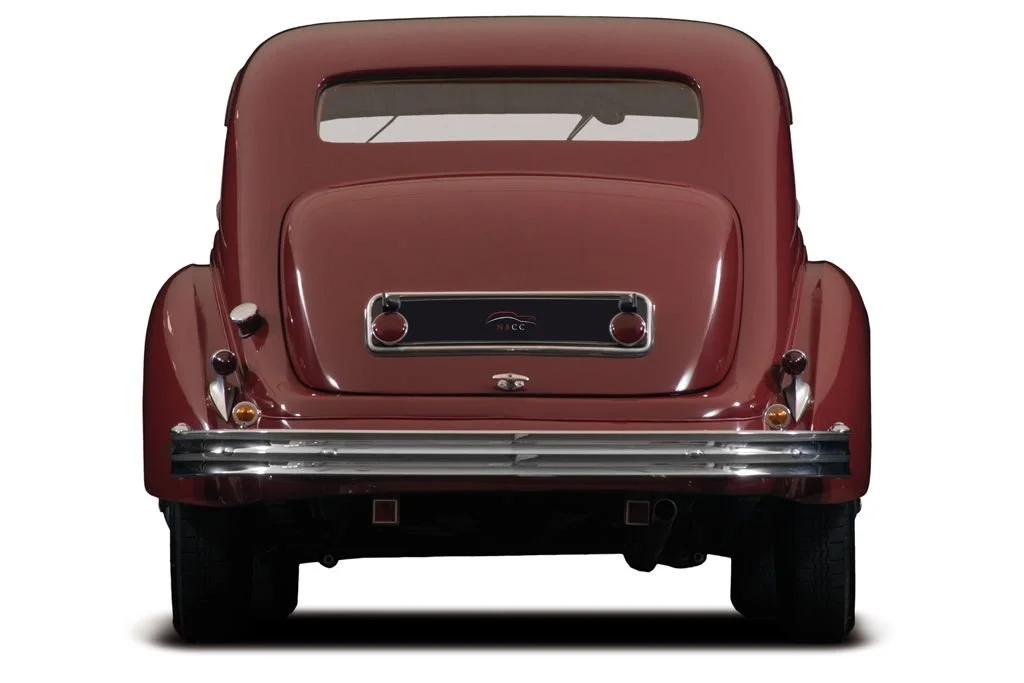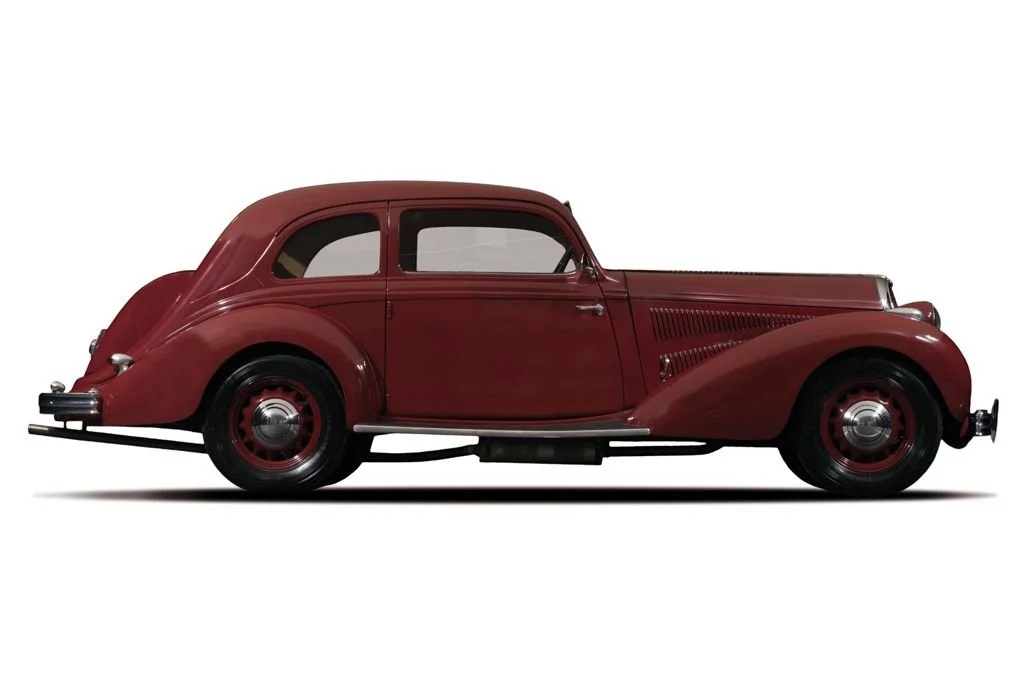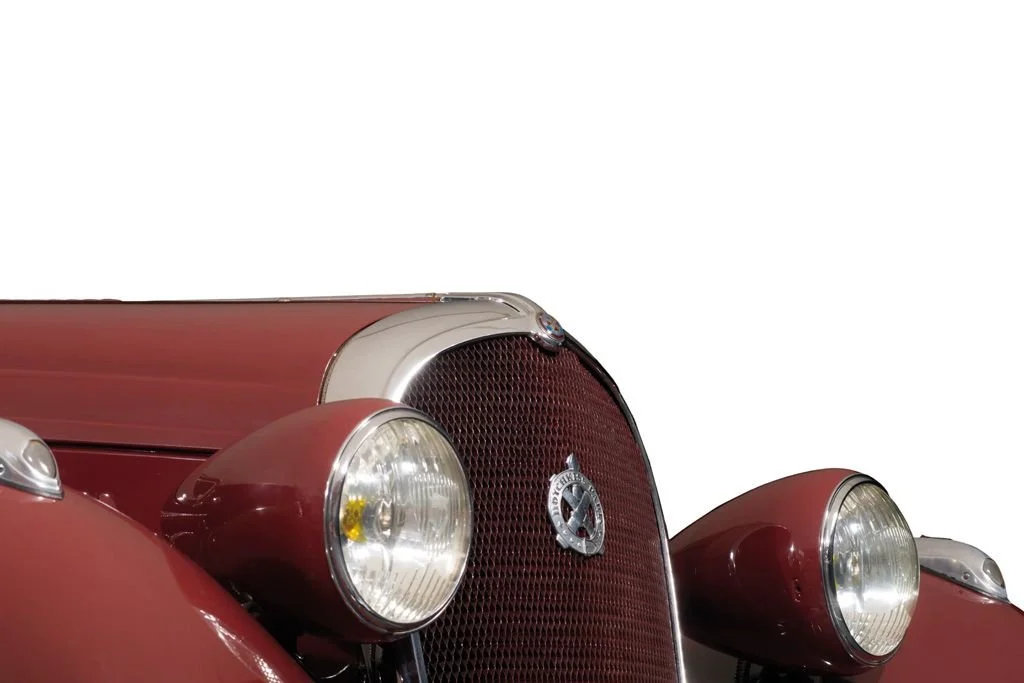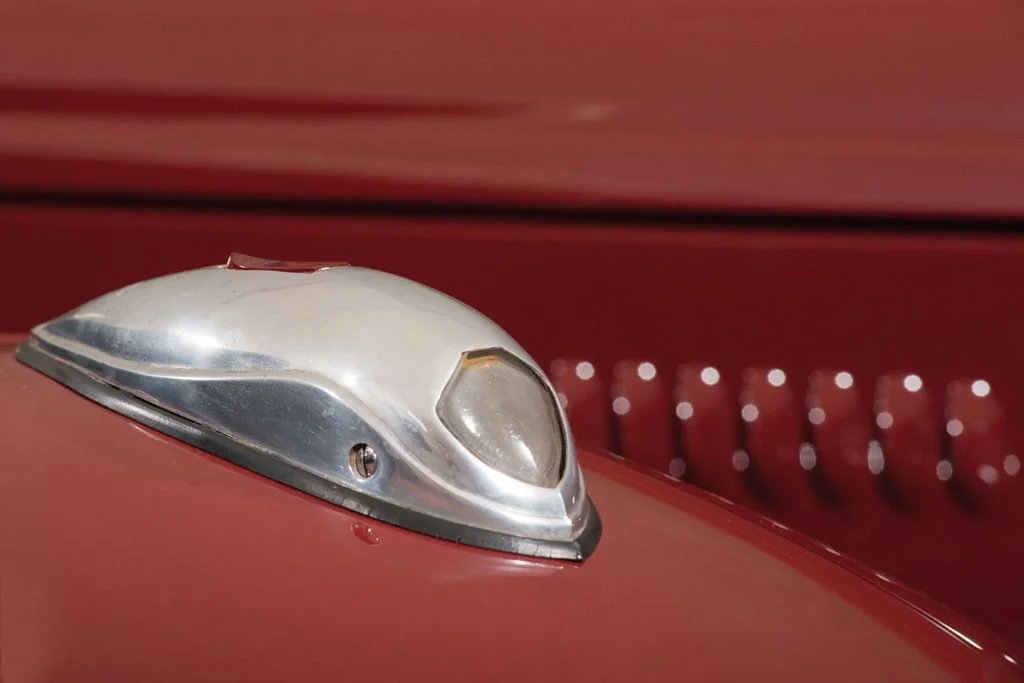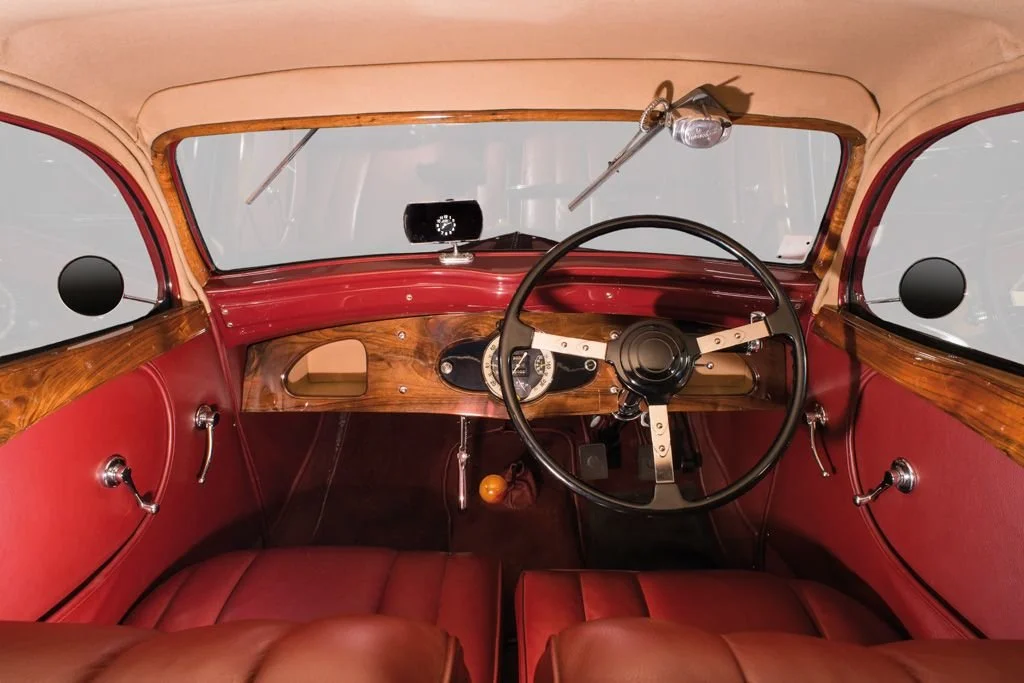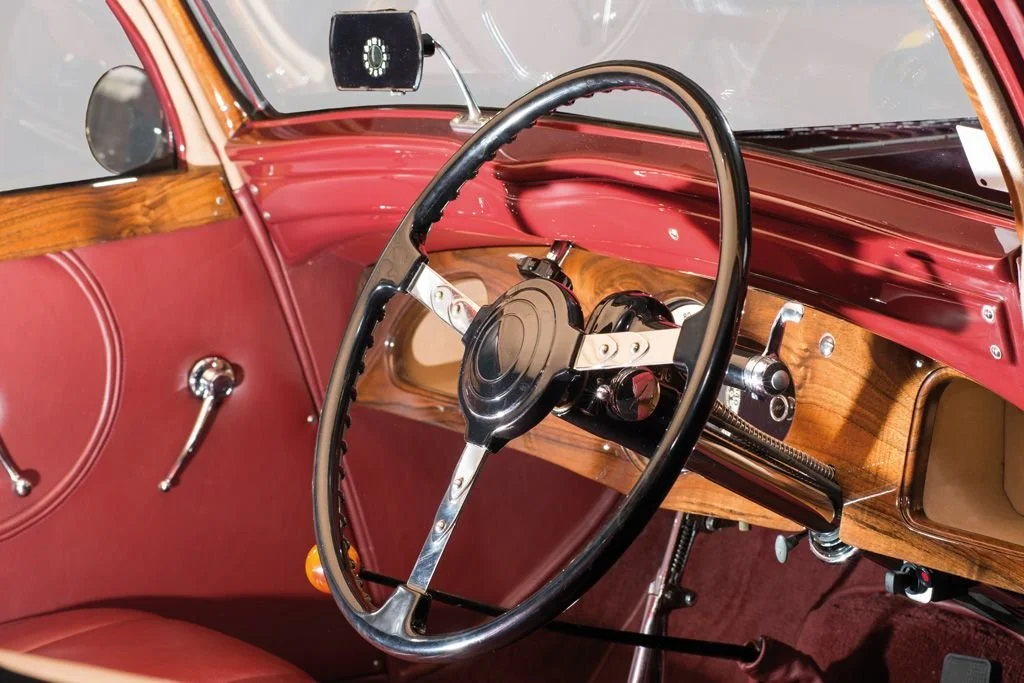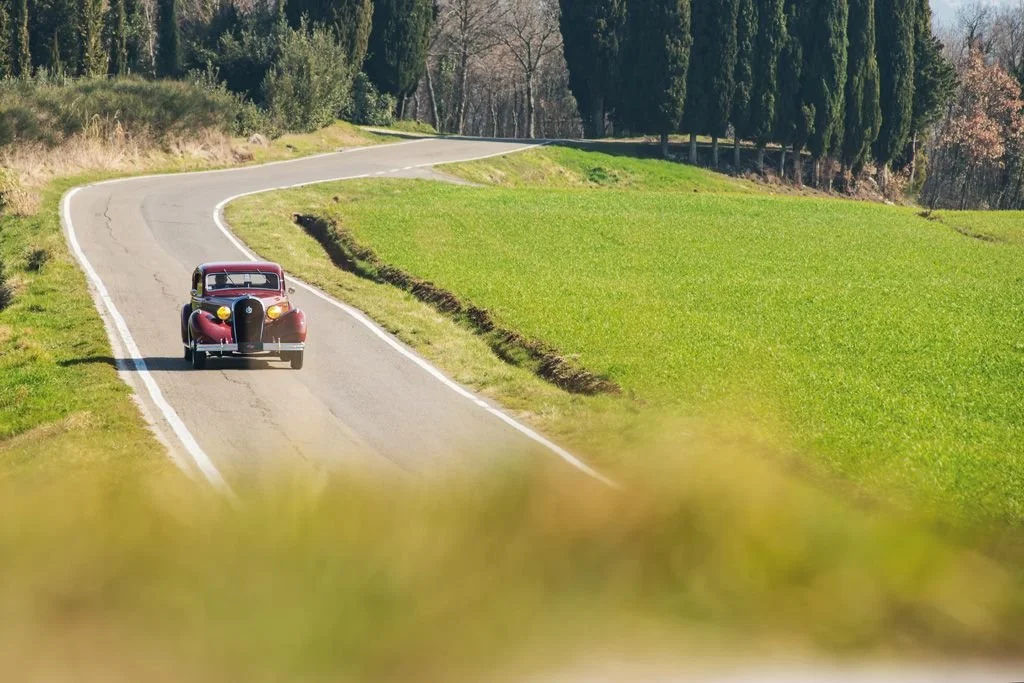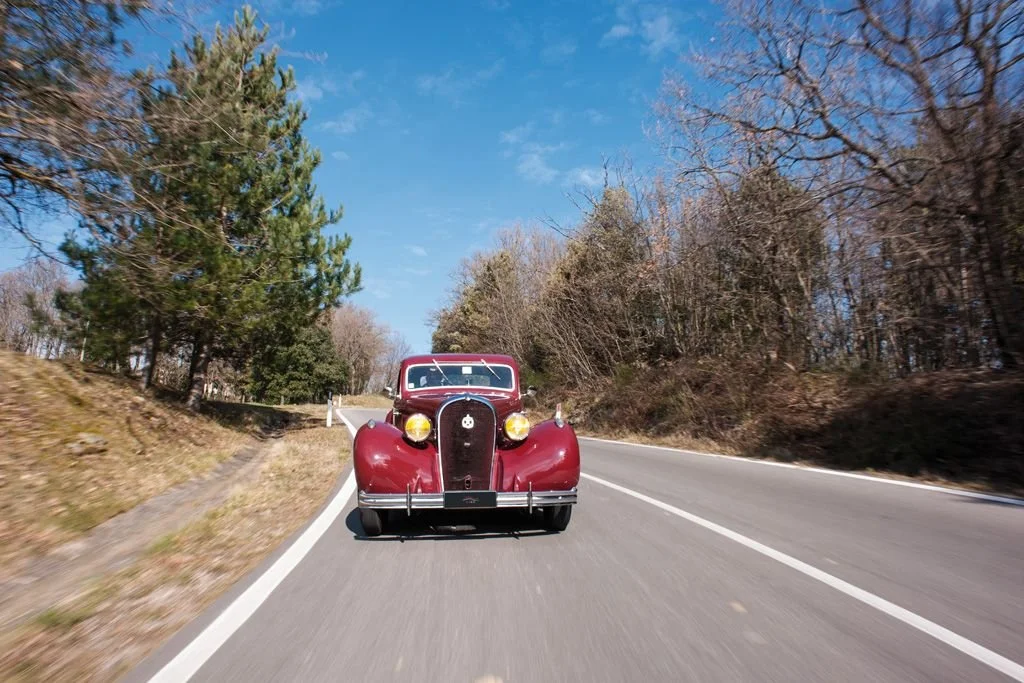-
A Hotchkiss from the thirties is without a doubt a cult car for all knowledgeable classic automobile collectors. This car in the Nicola Bulgari Collection is a model 686 P/N coupe of 1936. Hotchkiss offered the 686 with an optional Grand Sport (GS) performance upgrade and in 1936/'37 a twin carburetor model known as the Paris-Nice (P/N) was also offered. The normal 686 versions adopted a 3.5 litre six cylinder inline engine with a single carburetor, while the rarer GS and P/N had two carburetors and a higher performance camshaft.
Following its purchase in 2009, considering the rarity of the model, it was subjected to a professional restoration which concerned every single part, dividing the body from the chassis, renewing the chrome, interior and engine, all carried out at the French Bonnefoit workshop.
The Bordeaux color of the interior matches the same exterior color of the body, while the gentle rounded shape is reminiscent of the famous style of the Peugeot designers. Hotchkiss cars are indeed a valid example of the period when French designers demonstrated their talent, contributing to the school of automobile style worldwide. -
Company
Hotchkiss et Cie CompanyWheelbase
121.7inInterior trim
Bordeaux leatherBrakes
front and rear drumsMake
HotchkissLength
180.5inEngine
inline 6 - 213cidTires
6.50x16Model
686 - Model P/NWidth
66inCarburetor
2 carb. SolexBody style
2-door CoupeWeight
3432lbsHorsepower
125hp @ 4000rpmModel year
1936Exterior paint
BordeauxTransmission
3-speed manual -
Hotchkiss cars were made between 1903 and 1955 by the French company Hotchkiss et Cie in Saint-Denis, Paris. The badge for the marque showed a pair of crossed cannons, evoking the company's history as an arms manufacturer.
The company's first entry into carmaking came from orders for engine components such as crankshafts which were supplied to Panhard et Levassor, De Dion-Bouton and other pioneering companies, and in 1903 they went on to make complete engines. Encouraged by two major car distributors, Mann & Overton of London and Fournier of Paris, Hotchkiss decided to start making their own range of cars and purchased a Mercedes Simplex for inspiration, while Georges Terasse, previously of Mors, was taken on as designer.
The first Hotchkiss car, a 17 CV four-cylinder model, appeared in 1903. The engine of the 20 CV type C was heavily based on the Mercedes Simplex. Six-cylinder models, the types L and O followed in 1907.
With the outbreak of World War I, the factory turned to war production and a subsidiary plant was opened in Coventry, England. Car production resumed in France 1919 with the pre-war types AD, AD6, AF and AG. During World War I, they produced machine guns and tested them from the factory roof.
After an attempt to enter the luxury market with the AK, which did not get beyond the prototype stage, the company decided on a one-model policy and introduced the Coventry-designed AM in 1923. Later that year the Coventry plant was sold to Morris.
In 1926 construction of the new factory in the Boulevard Ornano was completed and in 1929 Hotchkiss got hold of a steel press allowing the in-house manufacturing of steel bodies. The one-model policy lasted until 1929 when the six-cylinder AM73 and AM80 models were announced. The AM models were replaced by a new range in 1933, with a new naming system. The 411 was an 11CV model with four-cylinder engine, the 413 a 13CV four and the 615, 617 and 620 were similar six-cylinder types. The 1936 686, which replaced the 620, was available as the high-performance Grand Sport and 1937 Paris-Nice with twin carburetors and these allowed Hotchkiss to win the Monte Carlo Rally in 1932, 1933, 1934, 1939, 1949 and 1950. The new naming scheme introduced in 1936 consisted of the number of cylinders, followed by the bore of the engine (in millimeters).
The car company in 1937 took over Amilcar. With re-armament speeding up they also started making military vehicles and light tanks. However, as the military situation deteriorated the decision was taken, on 20 May 1940, to abandon the Saint-Denis plant, which by now was fully concentrated on war production.
In July 1942 Peugeot took a controlling share in the Hotchkiss business and towards the end of 1942 the names of Peugeot and Jordan were listed as members of the Hotchkiss board. After the war, car production resumed only slowly with fewer than 100 cars produced in each of 1946 and 1947, but by 1948 things were moving a little more rapidly with 460 Hotchkiss cars produced that year. The Peugeot family sold their interest in the company. Coupé and cabriolet versions of the Hotchkiss-Grégoire were announced in 1951, but sales did not improve, and production stopped in 1952. Hotchkiss merged with Delahaye in 1954 to become Société Hotchkiss-Delahaye, but car production stopped in 1955 to be replaced by license-built Jeeps.


